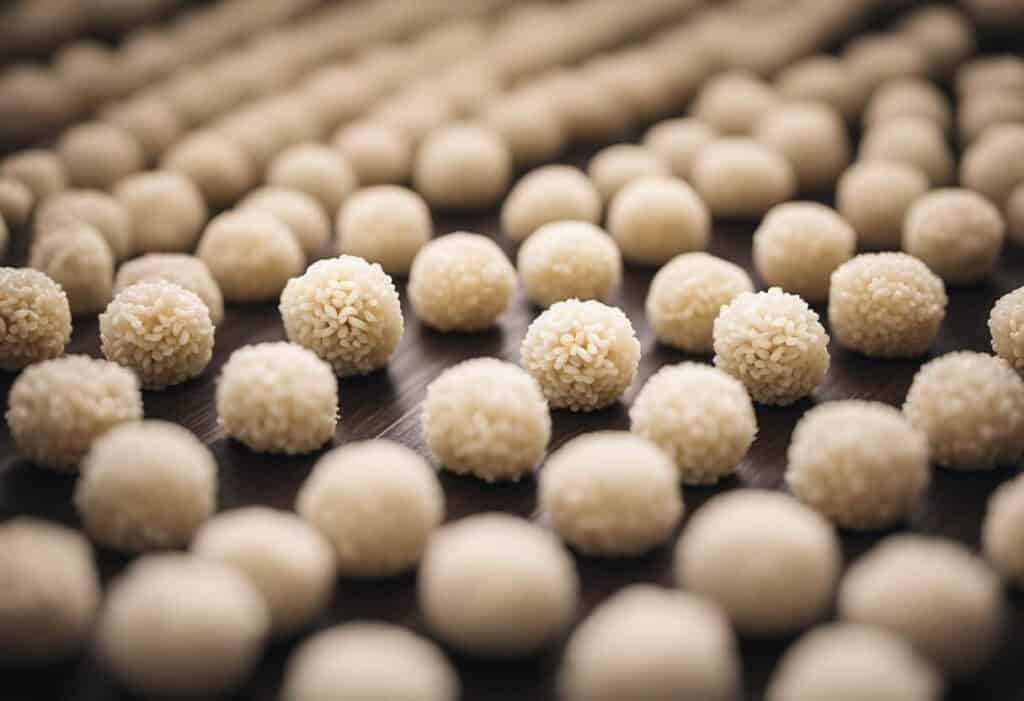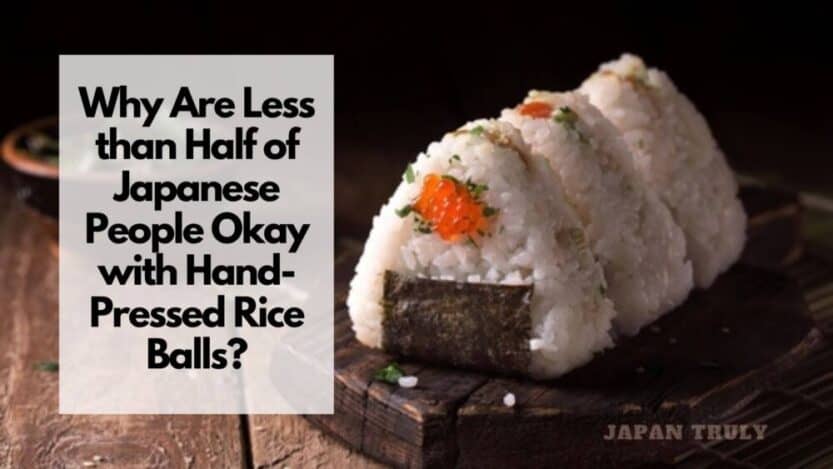If you’ve had the chance to taste onigiri, you might know them as Japanese rice balls. However, don’t expect them to always be round; they come in shapes like triangles, which are quite popular, especially in convenience stores.
In Japanese culinary tradition, onigiri’s shape isn’t limited by its name, which derives from the action of making them—pressing rice firmly to encase a delicious filling or to mount a topping.
Nowadays, the machine-produced onigiri might make you think twice about the delicacy of rice crafted by human hands.

In Japan, some people hesitate to consume hand-pressed onigiri unless it’s wrapped in plastic—a barrier between the chef’s hands and your meal. Some folks are even more particular, steering clear from hand-pressed onigiri no matter the safeguards.

Let’s talk about how you’d typically put together onigiri at home. You’d simply grab steamed rice, usually a short-grain variety like Japonica, add a pinch of salt for taste, moisten your hands with water, and start shaping.
You can fill your onigiri with a range of ingredients from umeboshi (pickled plum) to salmon or kombu, and then perhaps wrap it in nori for that crisp, salty finish.
The delicious possibilities are nearly endless, with flavors spanning from spicy mentaiko (seasoned cod roe) to the savory sweetness of teriyaki sauce.
Convenience stores have made onigiri an easy snack to grab on the go. This portable food staple, wrapped in plastic for hygiene and freshness, has become a daily bite for many.
Yet, despite the shift to automation, there’s something special about an onigiri shaped by hand. The personal touch can’t be replicated by machines—although hand-pressed ones are becoming more of a rarity outside of home kitchens or small takeaway shops.
Interestingly, the act of hand-pressing doesn’t seem to affect the public’s opinion when it comes to nigiri sushi.
Although the base of this beloved sushi is also rice and it shares a method of preparation with onigiri—gently pressed by hand—it continues to be favored even without the intervention of gloves or plastic wrap.
Whether you’re a fan of the store-bought efficiency or the homemade charm, onigiri continues to be a cherished part of Japanese culture.
So next time you mold that perfect triangle or help yourself to a conveniently pre-packaged treat, you’re not just enjoying a snack; you’re partaking in a slice of history, one delicious bite at a time.
My writing focuses on the various aspects of Japanese lifestyle, from traditional tea ceremonies and flower arrangement to modern fashion trends and pop culture. Through my articles, I aim to share my passion for Japan and provide readers with a glimpse into the rich and diverse world of Japanese culture.
I believe that the key to understanding Japanese lifestyle is to appreciate the balance between tradition and innovation. While Japan has a rich cultural heritage that dates back centuries, it is also a country that is constantly evolving and embracing new ideas and technologies.
Whether you’re interested in learning about the latest fashion trends in Tokyo, or want to explore the ancient art of calligraphy, my writing will take you on a journey through the many facets of Japanese lifestyle. So join me as we explore the beauty and complexity of this fascinating culture together!





